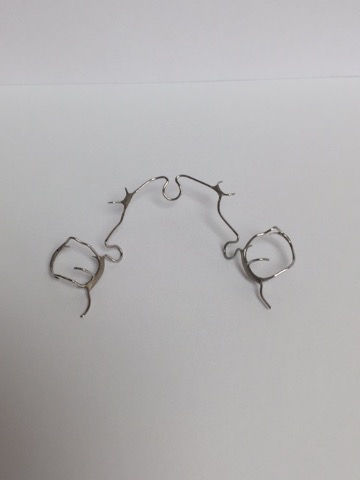– 
Over the years I have made perhaps a few thousand ALF appliances for my patients and still get this question almost every day: What is an ALF and what does it really do? Let’s start off with what ‘ALF’stands for: Advanced Lightwire Functional. I suppose it really is still considered an ‘advancement’ because so few people have heard of it, although it has been around for 40 years and I have used them for the past 10 years or so. So why is it so ‘advanced’? I think the reason for this is that with the ALF you oftentimes do not need the heavy duty palatal expander which can actually harm the teeth and the bones if not done correctly. And it is most certainly an advancement over the old appliances like the Herbst and old style braces. In fact, most of the time we do not need braces when I use the ALF.
As for the term ‘Lightwire’, yes, the wire is very light- in fact it is .025 Elgiloy if anyone is interested. Compared to many braces wires, this is pretty darned light indeed. I personally wear the ALF appliances and can hardly tell they are there. If you are so inclined, you can look up Elgiloy wire on the Internet and see that it is a popular orthodontic wire. When used correctly, it helps to actually align the bones in the skull to make them more symmetrical which is critical to good function and good health. In fact, leveling the cranial bones is what I mainly use the ALF for.
The term ‘Functional’ refers to what the wire does- which I said in the above paragraph- it gets the bones in the skull in better alignment so you can improve your overall health. I adjust the appliance every couple months to make sure we expand and level at the same time. All of this effort makes more room for the discs in the jaw joints and helps to reduce intracranial pressure for so many people who experience head and neck pain.
The only other part of the ALF that demands your attention is the turbo. The turbo/lifter/riser is a blue filling material we put on top of the lower second bicuspids to stimulate the eruption or lifting of the teeth. This makes your teeth just a smidge taller to better support the TMJ (temporomandibular joint). This is what helps to correct the TMJ problem and the ever so ubiquitous displaced disc. So many people have slipped discs and this can cause severe head and neck pain, so when we grow your teeth up a bit taller, it reduces the pressure on the discs which alleviates much of the pain.
So now that you understand the ALF a bit better, you can understand why I really enjoy working with this nice little appliance. It does take time to make things happen, but as with all good thing, it’s worth waiting for.
